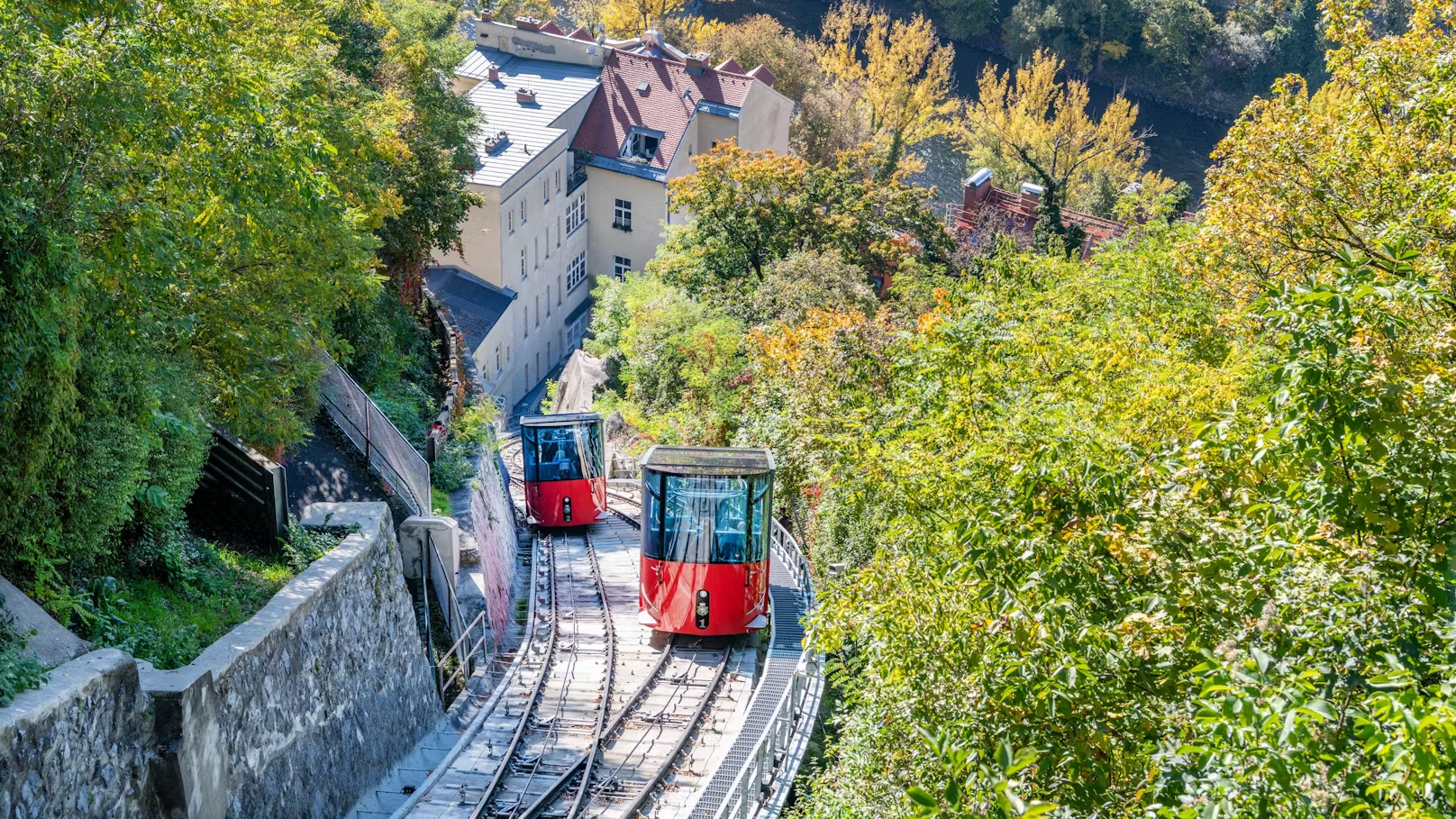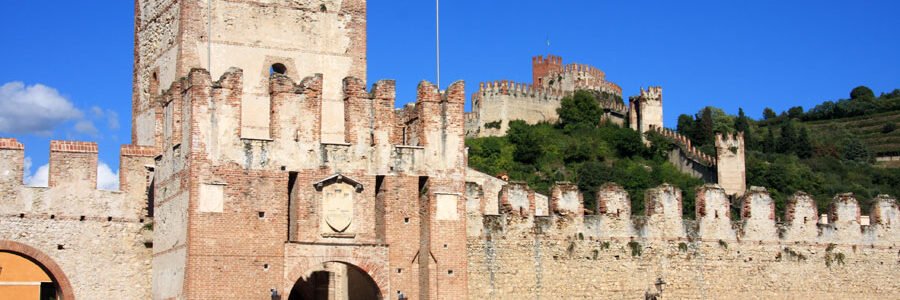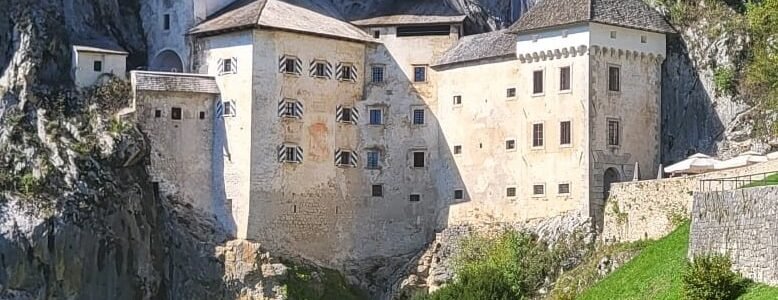Schlossberg and the Underground Secret
Graz’s Iconic Hill That Isn’t Just a Hill
At first glance, Schlossberg looks like a typical European city hill — forested paths, a few landmarks, and a staircase cutting through the slope. But locals know it’s not just a viewpoint. It’s a living structure with multiple layers: above, a clock tower that defines the Graz skyline; below, a tunnel system that most visitors don’t expect until they’re already walking through it.
Getting to the base is easy. From Hauptplatz, it’s a 10-minute walk to the funicular or the foot of the stairs. There are multiple access points, but most people take the 260 steps up from Karmeliterplatz — a steady climb, but well maintained and shaded.
Clocktower and the View That Frames Graz
Once on top, the first thing people look for is the Uhrturm, the old clocktower. Its unique reversed clock hands confuse many at first glance: the large hand shows hours, the small hand minutes. That’s how it’s been since the 1700s. From the surrounding terrace, you can see red rooftops, the River Mur, and the distant hills that wrap around the Styrian capital.
Benches around the tower are often occupied by people eating sandwiches or taking photos — but just a few steps behind the tower, the atmosphere quiets down. You’ll find gardens, shaded paths, and tucked-away spots where even on busy days, the noise doesn’t follow.
Down into the Hill: A City Beneath a City
Not far from the summit, a staircase leads down to something unexpected: a door into the mountain. What begins as a cool, damp corridor opens into a network of tunnels carved directly into the rock. This is the Schlossbergstollen — originally constructed as an air-raid shelter during WWII, it was designed to hold over 40,000 people.
Today, parts of the system are open to the public. Inside, temperatures stay low year-round, making it a welcome break in summer. There’s no background music, no overdone signage. The silence is noticeable — and it adds to the atmosphere. You’re not just walking underground; you’re walking through a piece of preserved history that hasn’t been overly polished.
A mini-train, the Schlossbergbahn, runs through part of the tunnels, often used by families with kids or those wanting to avoid the climb. But walking the length of the tunnel is a different experience. Lights are minimal, and the rock walls still show old markings and pipework from their original function.
Event Spaces and Unexpected Corners
In recent years, some parts of the tunnel system have been adapted into cultural venues. Dom im Berg, for example, is a performance hall entirely inside the mountain. It hosts concerts, exhibitions, and dance events, and has become one of Graz’s most unique stages.
What’s striking isn’t just the location, but the acoustics. Sound carries differently underground — sharper, cleaner, sometimes eerie. Standing inside when the hall is empty gives you an odd mix of isolation and clarity. It’s one of those places that feels physically separate from the city, even though you’re standing right beneath it.
If you’re planning a return from Graz after visiting Schlossberg, a comfortable transfer from Graz to Ljubljana is one of the easiest ways to continue your journey without changing trains or relying on public schedules.
In the quieter tunnels, installations or lighting experiments occasionally appear. But nothing overwhelms the original feeling of the place — which is restraint. It doesn’t try to entertain; it simply shows you something you probably wouldn’t have expected from a city like Graz.
Cafés and Calm Back Above Ground
Once you emerge, it’s worth slowing down again before leaving. Near the Uhrturm, there’s a small café with outdoor seating where you can order a cold drink or simple lunch. The menu is basic — sandwiches, cake, local beer — but the view makes it worthwhile. It’s not just a place to rest your legs, but a good way to extend the visit without rushing.
This is also where many people reflect on the difference between what they expected and what they actually saw. Graz doesn’t overpromise. But Schlossberg delivers more than a hilltop park. The contrast between open views and enclosed tunnels is part of the city’s character: comfortable above, complex underneath.
Families, Solo Travelers, and Side Routes
Schlossberg is well-suited for all types of visitors. Families tend to stay above ground — kids love the cannon at the top and the open green areas to run around. For solo travelers or couples, the tunnels and side gardens offer a quieter experience.
Less-known paths on the eastern slope lead down into the Lend district — an area full of independent stores, bakeries, and locals on bikes. It’s easy to extend your Schlossberg visit into a broader loop through Graz, ending in one of the city’s riverside bars or markets.
You don’t need a tight plan. The entire area encourages you to wander — and to slow down.
Official Travel Information for Schlossberg
For tunnel hours, guided tour options, Dom im Berg event listings, and ticket info for the funicular or elevator, visit the
Official Graz Tourism website — they maintain current info year-round, including weather updates for the hill and openings during holidays.
What Stays With You After the Climb
The Schlossberg experience doesn’t rely on “big” moments. It’s the contrast that works — between the open skyline and the hollow silence underneath. Between sunlight and cool stone. Between walking up and disappearing down.
Graz doesn’t need tall towers or royal palaces to impress. What it offers is steadier: space, balance, and layers you don’t expect at first. Schlossberg is the best example of that. It shows you a city that doesn’t rush to be seen — it waits to be discovered.
Graz Schlossberg: Echoes Above the Rooftops
High above the terracotta roofs of Graz, the Schlossberg hill holds centuries of watchful silence. Its clock tower doesn’t simply mark time — it remembers it. Winding paths lead through old fortifications and shaded steps, each turn offering new angles of the city’s story.
Those journeying along the transfer from Ljubljana to Graz often describe a quiet shift — from wide Slovenian fields to the intricate folds of Styria’s hills — where the road itself feels like a gentle ascent into memory.
- Slovenian roads that rise toward Graz elegance
- Moments of reflection near another Austrian gem
- Routes that stretch toward thermal serenity
- Create your own itinerary to places like Schlossberg
- Stories from paths between cities
- Eastern roads that echo with cultural gravity
You don’t climb Schlossberg — you drift upward through time
There’s a certain quiet that lives on the hill. It’s not silence, but something older — the kind of stillness that settles in stone after years of watching. Views stretch over red-tiled roofs and narrow alleys, while below, the city pulses gently — unaware you’re above it all.
- Ideal pause after exploring Graz’s vibrant core
- Feels like you’re walking through the breath of history
- Landscapes blend with architecture and sky
- The hill listens more than it speaks
- Not just a view — a perspective
Some places lift you gently — not just higher, but inward
Graz Schlossberg blog tales rise between skyline and stillness
Schlossberg isn’t just a landmark — it’s a moment stretched in stone and wind. A walk through it opens more than a view; it reopens your sense of pace. For more on Graz and its poetic heights, visit the Official Graz tourism site.
RECENT POSTS
- Maribor From Within June 25, 2025
- Kranjska Gora Slower June 25, 2025
- Munich Between the Lines June 24, 2025





























































Leave a Comment